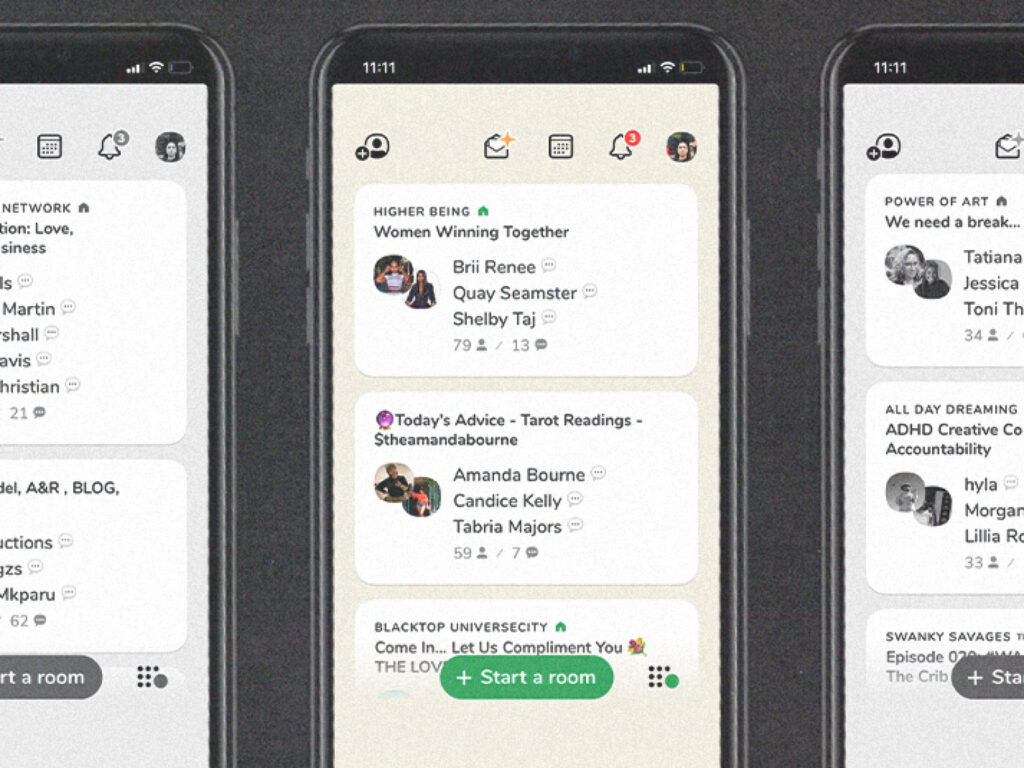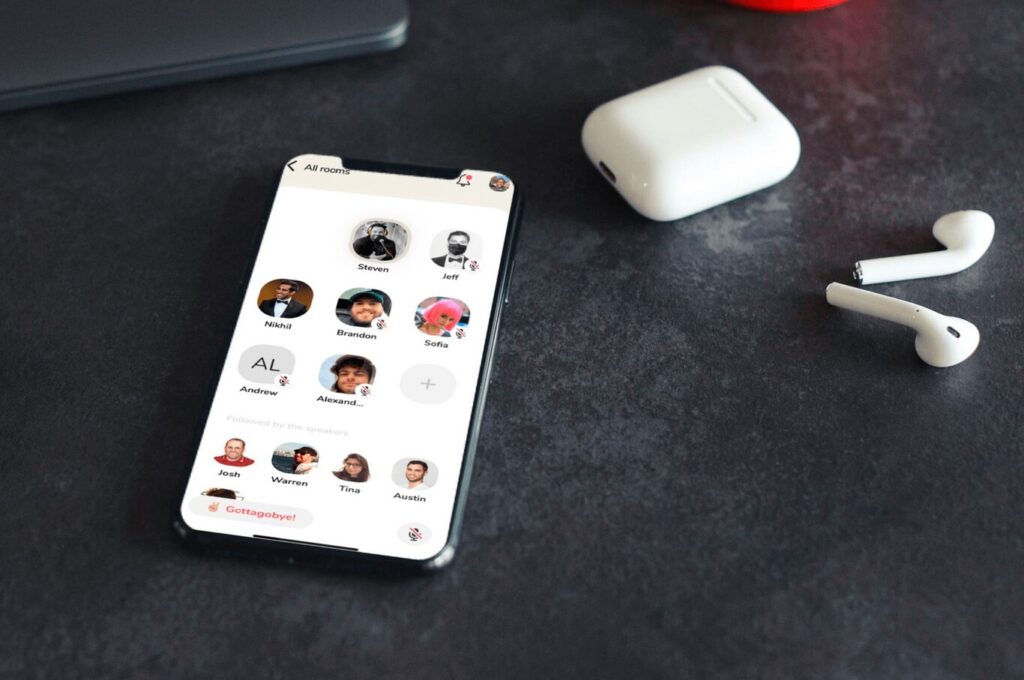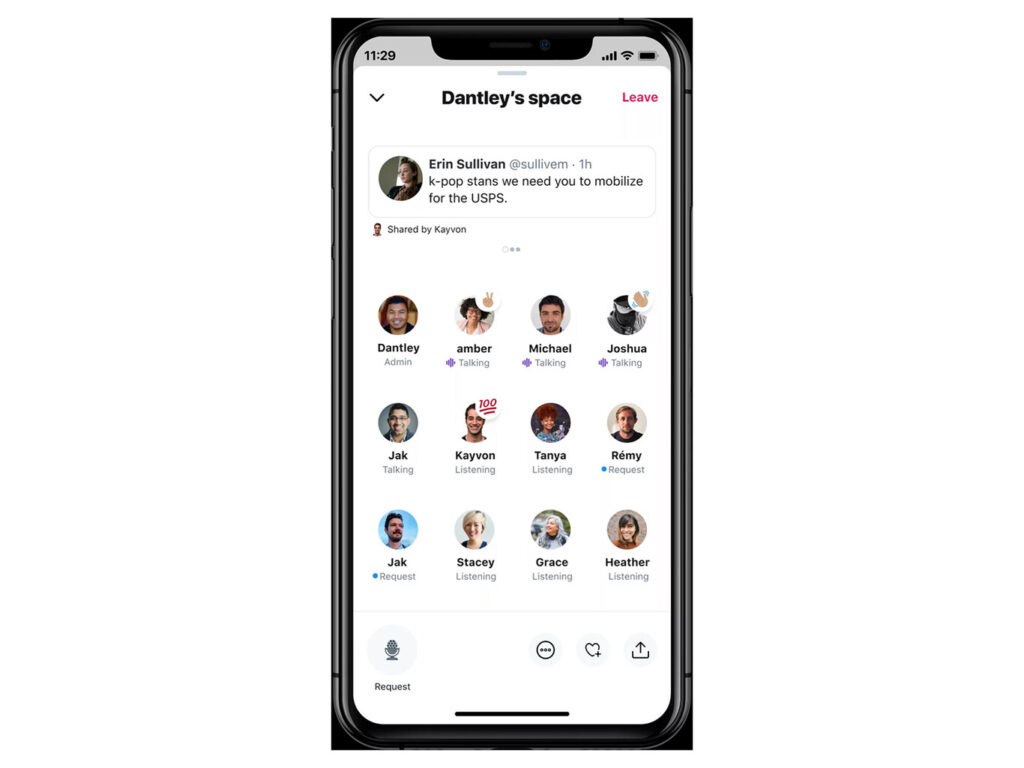Social networks first conquered us with text (Facebook, Twitter) and then with images and videos (Instagram and TikTok). There is talk of a pending revolution: the audio revolution and a new and surprising social network called Clubhouse is in that race.
The platform has already managed to attract more than one million users in less than a year, and it has done so only by using their voices because in Clubhouse the discussion is dominated mainly by (ephemeral) voice messages from its users.
This is how Clubhouse works

The application started from a previous project by Paul Davison and Rohan Seth, who joined forces to create Talkshow, an application for easily creating podcasts.
That idea didn’t quite take off, but it was the seed for the creation of Clubhouse, which took advantage of and simplified Talkshow’s feature of allowing a guest to participate in a podcast. The clubhouse was launched in May 2020 as a way for creators from all over the world to participate in a way that was different from what other social networks were proposing.
The platform is in a preliminary phase where the only application available is for iOS; there is no app for Android.
Also, the social network is not open to all audiences, and at the moment it is only possible to access it if another user invites you.
Content creation is very simple in Clubhouse, where you join channels (“rooms”, as in Discord) and talk as you would in a phone conversation. Either that or, of course, you listen to everything that others have been saying, in a format that avoids having to write and that takes a little further than that trend of voice messages that are already very popular in WhatsApp.
Anyone can create a new room or (try to) join one of the existing ones: each room has as its title the initial topic being discussed in that room. Each room has a moderator – the person who created it – and an audience.
If you want to speak, you must “raise your hand” and then the moderator gives you the floor since that user is the one who controls the debate in that room. From that point on, the rhythm is the one that emerges from the comments and the attitude of the moderator, whose role is the same as that of a moderator of a discussion forum or a subreddit, but “supervitaminated” because the messages are no longer text messages but audio messages.
As Austen Allred, co-founder of Lambda School, said, this type of platform is similar to Twitter to some extent, “but the audio format is fascinating because you can have it in the background, it’s not a permanent record (the content is ephemeral) and it can come from different sources. People can have real conversations, something that doesn’t happen a lot these days.”

Conversations that take place in Clubhouse are not recorded or transcribed and are only stored for the period during which that room and that discussion are active.
The privacy terms indicate that only in case of a violation of the terms of use are these messages recorded for further investigation, but otherwise, according to Clubhouse, the content is short-lived and only accessible as long as the room and the discussion remain active.
Those who are already users of this platform speak highly of it and see it as a potential revolution when it comes to debates and discussions on all kinds of fields.
This invitation-only access format has also made conventional users intermingle with some of the great personalities from the world of technology, culture, or show business: Oprah Winfrey, Ashton Kutcher, Jared Leto, Chris Rock, Mark Cuban, Marc Andreessen, or Felicia Horowitz have participated in conversations with other celebrities, but also with normal users.
The Clubhouse phenomenon is for now very restricted to the United States, where much of the activity of its users is centered, but the impact has been clear, and many of the major media have analyzed this new social network where everyone wants to be.
Moderation is still the problem
When Clubhouse was launched, it did so with the idea of giving moderators the power (and responsibility) to manage each of the rooms they had control over. The idea seemed interesting, as it posed a possible solution to the huge filtering and moderation problem that many social networks have.
A few months after its launch, however, it became clear that the mechanisms proposed by Clubhouse were not effective. In a conversation between Silicon Valley investors in one of these rooms, they discussed a problem that several detected in this industry: journalists had too much power to investigate all kinds of companies and damage the managers and CEOS who had created them.
Taylor Lorenz, a reporter for The New York Times who had given a very positive review of Clubhouse shortly after its launch, ended up becoming the victim of a series of attacks from one of the entrepreneurs and venture capitalists who had participated in the conversation, Balaji S. Srinivasan. The reason, a response from Lorenz to a series of messages from the one-time co-CEO of luggage startup Away.
That scandal uncovered tensions between the U.S. media and Silicon Valley elites. Andreessen Horowitz – which had already invested 10 million dollars in Clubhouse in its beginnings and has now increased that investment – was shown as a firm with a questionable way of acting in its relationship with the media.
This phenomenon is linked to other problems such as anti-Semitic comments, and this even though just a short time before Clubhouse had put in place some mechanisms to report users who harassed other users. The company announced further measures, but the problem seems to be still present and is a threat to its future.
Moderating users on Clubhouse seems particularly complicated: text searches make it easy to track a user’s past activity, but doing the same with audio messages seems more complicated. In this social network, even that is not feasible: when a discussion ends, the audio messages disappear forever.
It will therefore be interesting to see how Clubhouse solves (if it succeeds) a problem that is present in any social network nowadays – even though there are platforms such as Parler that tried to go in the opposite direction – and that is growing as much or more than the networks presently.
Twitter strikes back with Spaces

Twitter has been working for some time on offering options similar to those offered by Clubhouse. Its name is Spaces – launched last December-, and the idea is to integrate this option into Twitter as they have already done with Fleets.
Just like Clubhouse, Spaces allows each user to create their own “space” and then moderate it and give a voice to each of the participants in those spaces.
The theoretical idea is that these spaces can serve as a channel where users can converse, but in a way that avoids toxic participants and trolls.
To this end, Twitter would provide various tools to the creators and moderators of these spaces. Twitter will offer initial access to this feature to users who are usually more frequently attacked on this social network: women and people with profiles that are usually marginalized.
This post may contain affiliate links, which means that I may receive a commission if you make a purchase using these links. As an Amazon Associate, I earn from qualifying purchases.

